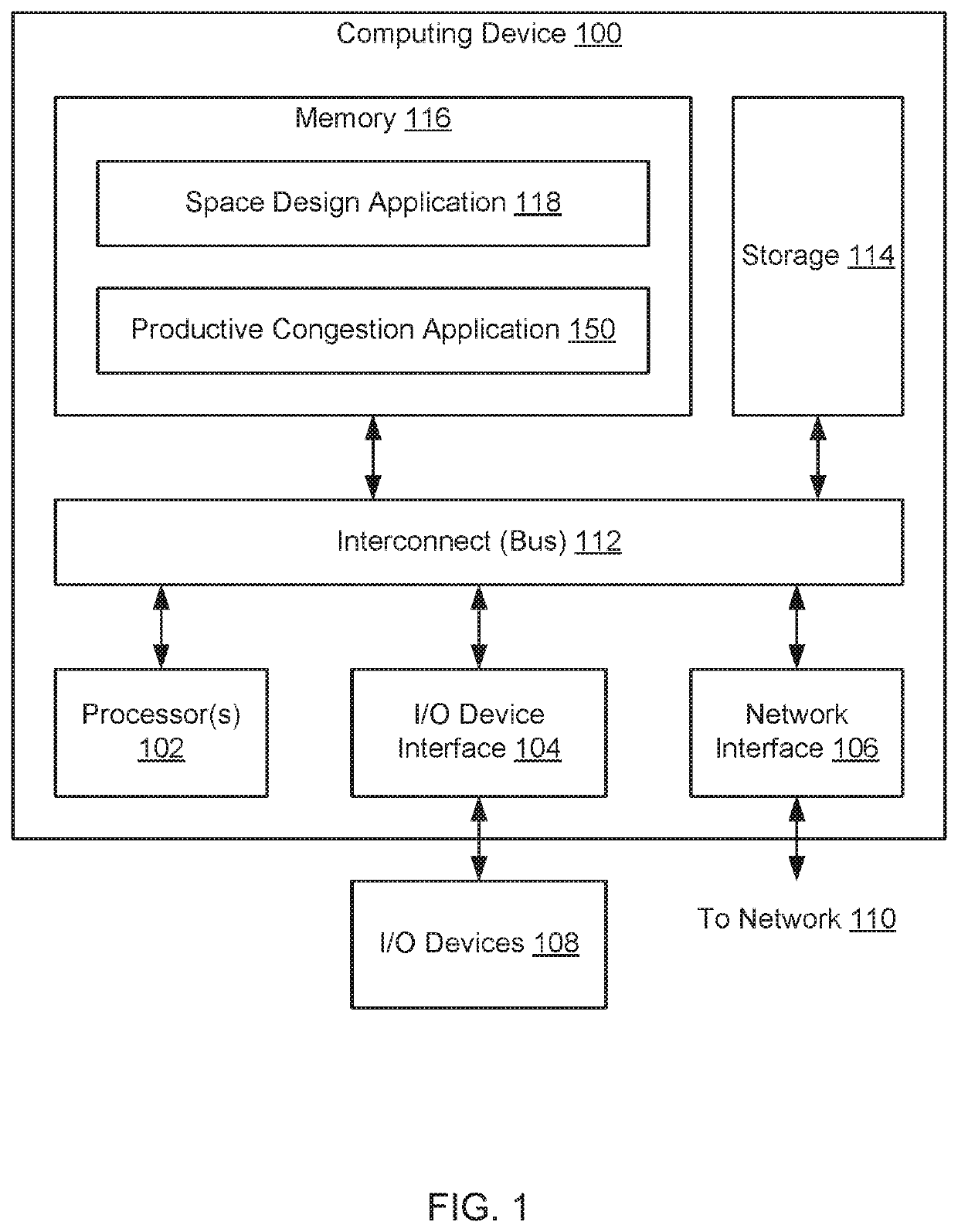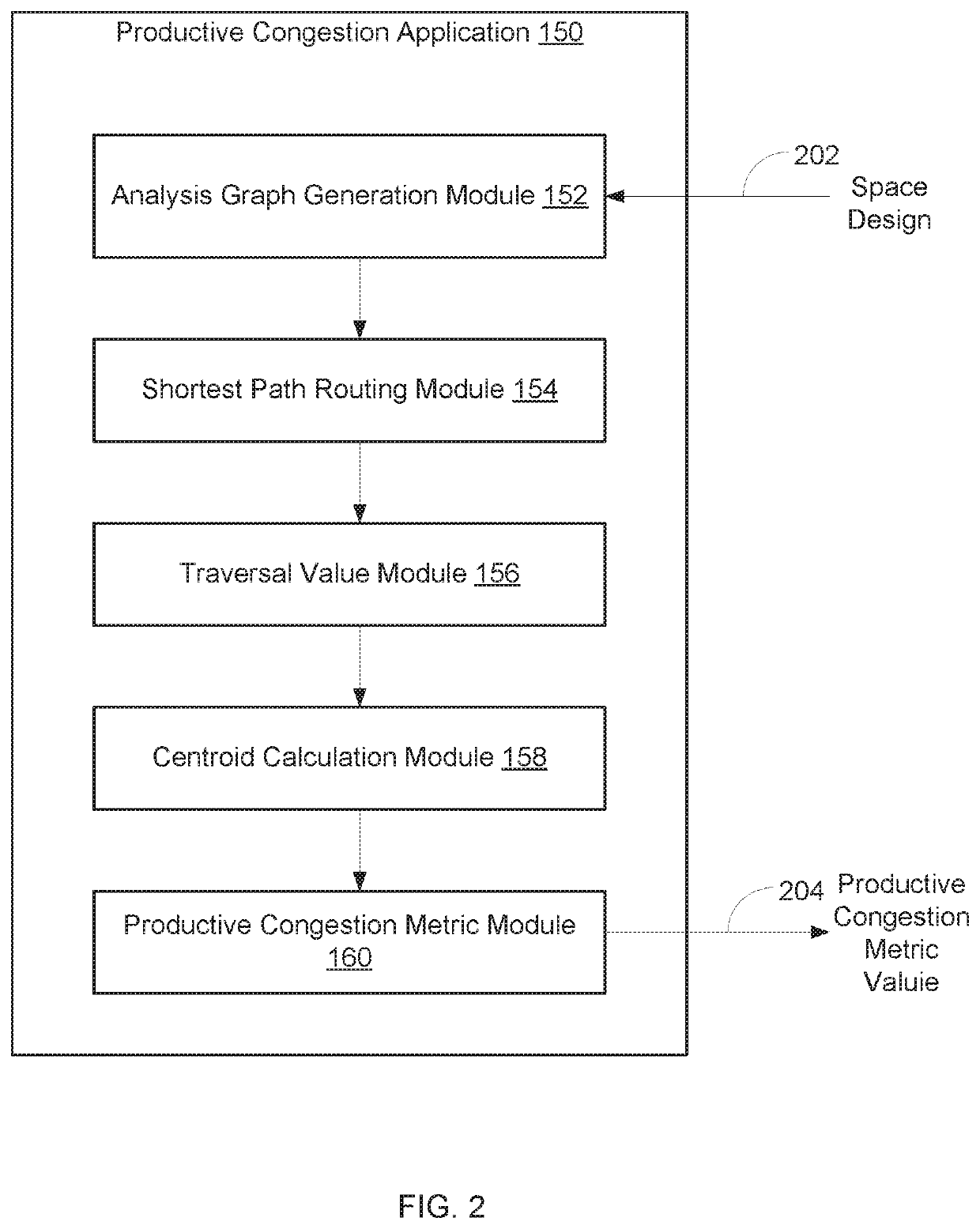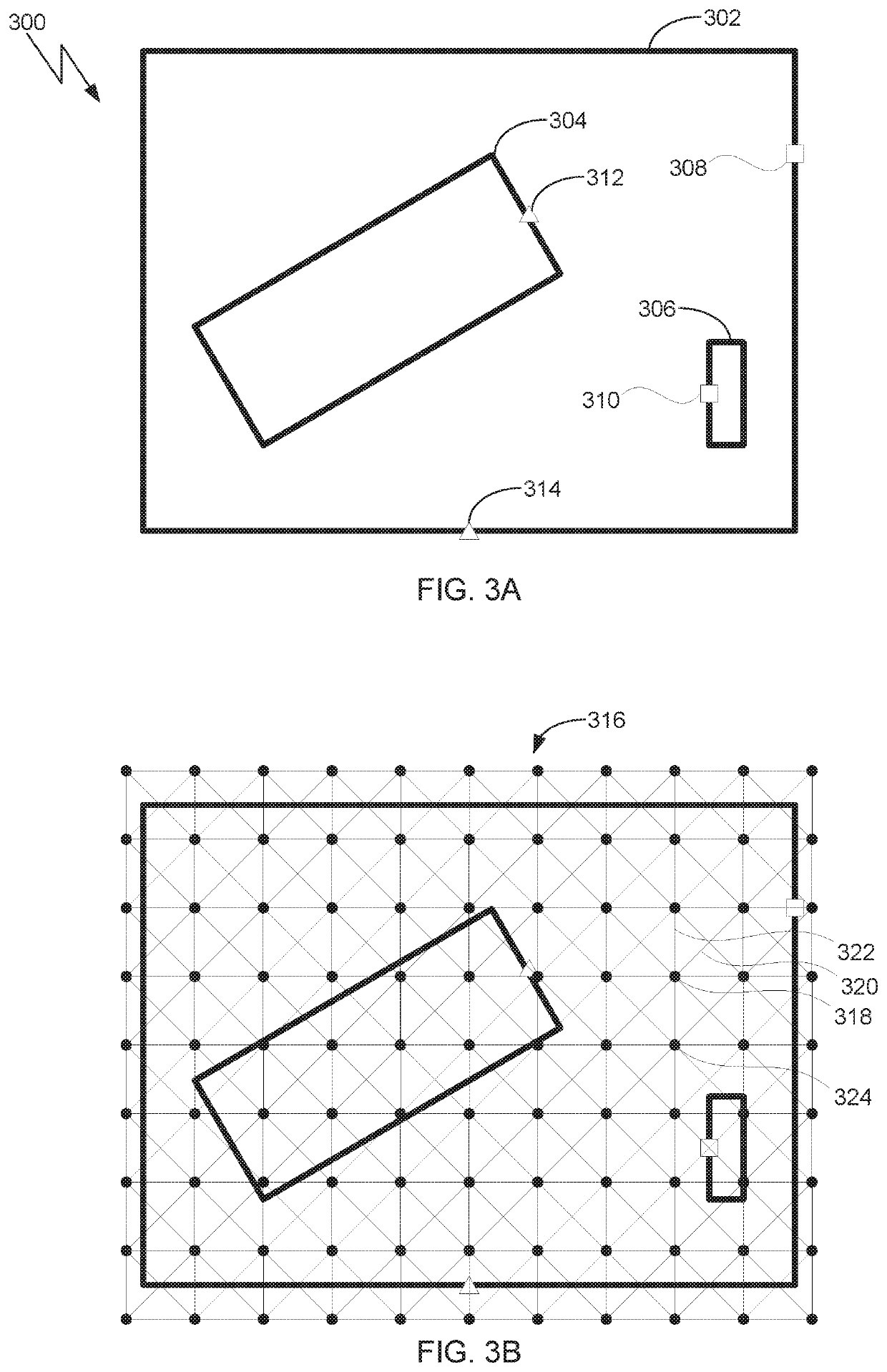Techniques for measuring productive congestion within an architectural space
a technology for building spaces and productive congestion, applied in the field of computer-aided design, can solve the problems of large computational time and resources, large computational cost and time consumption of crowd simulation, and the inability to track the dynamic agents of many simulations, etc., and achieve the effect of reducing time consumption, and reducing the cost of crowd simulation
- Summary
- Abstract
- Description
- Claims
- Application Information
AI Technical Summary
Benefits of technology
Problems solved by technology
Method used
Image
Examples
Embodiment Construction
[0002]Embodiments of the present invention relate generally to computer-aided design, and more particularly, to techniques for measuring productive congestion within an architectural space.
Description of the Related Art
[0003]One technique for designing architectural spaces is the generative design method. The generative design method uses metaheuristic search techniques to calculate and evaluate numerous design options, and discover the design options that achieve defined design objectives. This method, which is normally automated, allows a designer to explore substantially more design options than would be possible through manual methods.
[0004]When designing architectural spaces and layouts associated with such spaces, a quality that is of concern to designers is the congestion quality of a space. Typically, designers are concerned with the negative congestion quality of a space (e.g., congestion that causes bottlenecks during an emergency evacuation). There is, however, also a pos...
PUM
 Login to View More
Login to View More Abstract
Description
Claims
Application Information
 Login to View More
Login to View More - R&D
- Intellectual Property
- Life Sciences
- Materials
- Tech Scout
- Unparalleled Data Quality
- Higher Quality Content
- 60% Fewer Hallucinations
Browse by: Latest US Patents, China's latest patents, Technical Efficacy Thesaurus, Application Domain, Technology Topic, Popular Technical Reports.
© 2025 PatSnap. All rights reserved.Legal|Privacy policy|Modern Slavery Act Transparency Statement|Sitemap|About US| Contact US: help@patsnap.com



